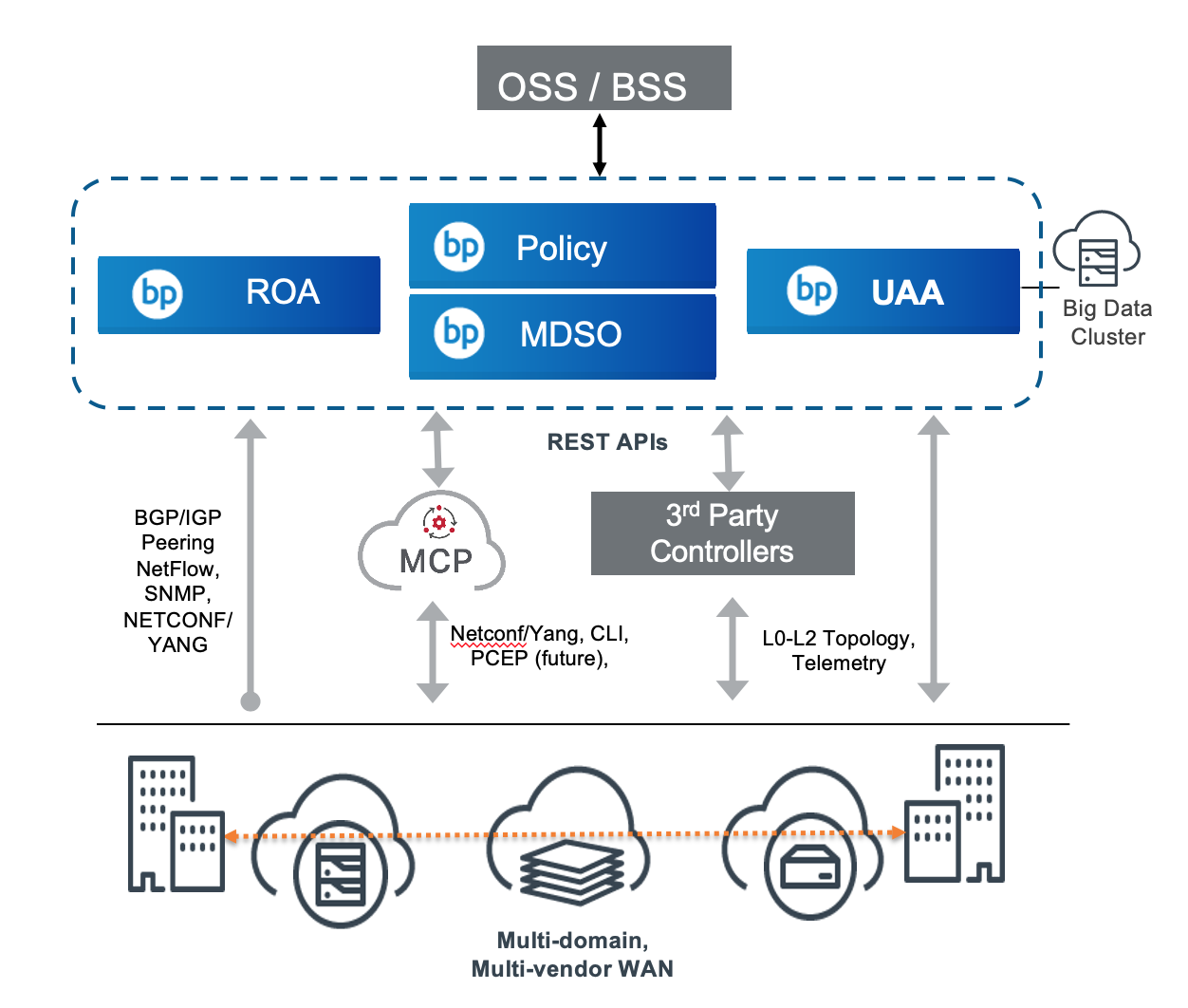Intelligent and rapid assurance operations for complex networks
Today's assurance tools aren't equipped to effectively manage complex multi-technology and multi-domain networks. They have highly fragmented frameworks that require manually intensive swivel-chair operations and aren't designed to address issues caused by interdependencies among the multiple layers of the network-which consume significant operational resources and can't be easily tracked or managed. Importantly, this leads to potentially costly SLA violations.
Blue Planet's Multi-Layer Assurance (MLA) unifies assurance for multi-vendor and multi-layer networks that span both optical and IP domains. It's a key use case for Blue Planet Unified Assurance and Analytics (UAA) and leverages the real-time IP topology and MPLS service level alarm capabilities of Blue Planet Route Optimization and Analysis (ROA), and Blue Planet NFV Orchestration (NFVO ). MLA uses advanced analytics, AI, and machine learning combined with human oversight to speed up assurance of issues that span multiple layers and can impact critical services. The result is outstanding service reliability and SLA conformance-and gaining your customers' trust and loyalty.

Key Features
Implementation of protocol-agnostic device monitoring, alarm federation, and performance thresholding with alerts before emergencies occur.
Collection of multi-source fault and performance metrics across optical transport and IP domains for unified analysis and management.
Multi-layer, cross-domain correlation, root-cause analysis, and customer impact analysis to reduce finger-pointing between different teams.
Unified insight into network utilization and performance for improved planning and procurement of additional network resources.
Integration with existing OSS/BSS, NMSs, and assurance tools through TMF standards or customer API.
Support for over 1,300 elements across more than 135 vendors and growing.
